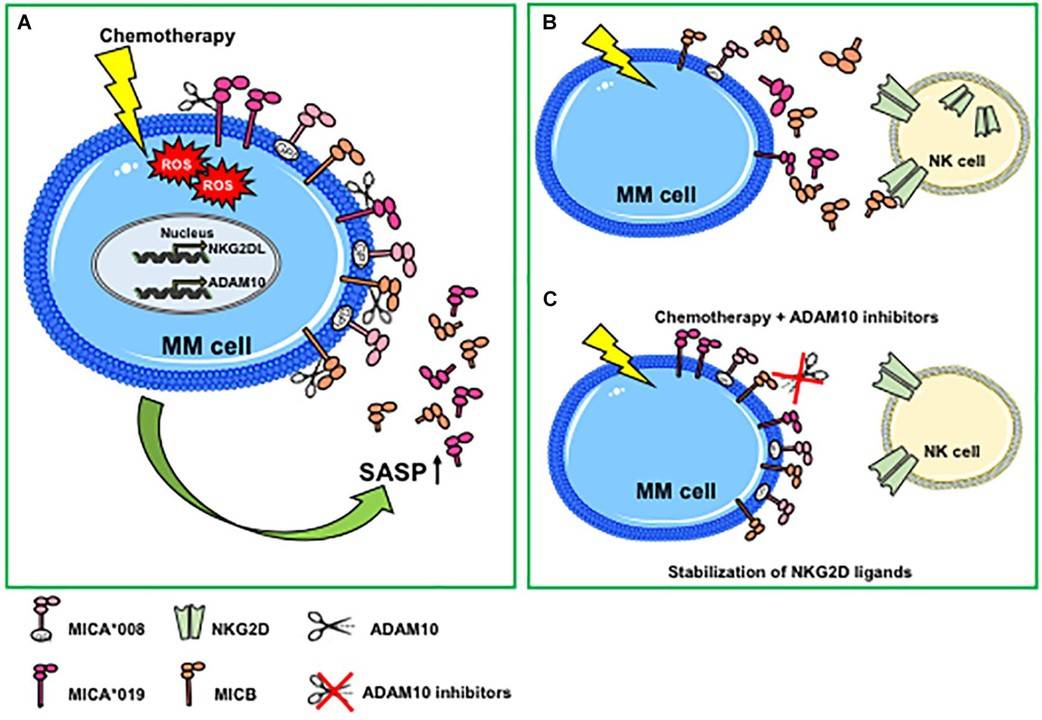Solid and universally accepted evidence has suggested a relationship between major-histocompatibility-complex (MHC) class I related chain A (MICA) antibodies and solid organ transplant rejection, where no human leukocyte antigen (HLA) antibodies are detected. Creative Biolabs provides MICA single antigen antibody screening service to detect antibodies against a panel of the most common MICA antigens.
Despite such good HLA-A, HLA-B, and HLA-DR matches, some kidney transplants still fail, which suggests that other antigens might be targets for rejection. MICA antigens are expressed on endothelial cells, dendritic cells, fibroblasts, epithelial cells, and many tumors, but not on peripheral-blood lymphocytes. It is a kind of surface glycoproteins1 with functions related to innate immunity. Same as HLA antigens, MICA antigens can elicit antibody formation when exposed to allogeneic MICA during transplantation.
Unlike classical HLA class I gene products, MICA does not present any antigen but acts as a ligand for several immune cells. MICA polymorphisms are associated with many diseases related to NK activity, such as viral infection, cancer and allograft rejection or graft-versus-host disease (GVHD). The mechanisms underlying these associations include NK cell-mediated cytotoxicity and MICA shedding to produce immunosuppressive soluble MICA particles.
As a ligand for NK cells bearing NKG2D receptors, MICA forms a complex with a disulfide isomerase/chaperone, ERp5, to induce a conformational change that enables proteolytic cleavage of MICA by ADAM proteases. The cleaved MICA then interacts with NKG2D, which induces the internalization and degradation of the receptor and stimulates the population expansion of immunosuppressive T cells n turn.
 Fig.1 Genotoxic stress promotes ADAM10-mediated shedding of MIC molecules in multiple myeloma.1
Fig.1 Genotoxic stress promotes ADAM10-mediated shedding of MIC molecules in multiple myeloma.1
MICA single antigen antibody screening is a solid-phase immunoassay designed to detect IgG antibodies binding to beads pre-coated with recombinant preparations of MICA alleles. As a valuable tool for specificity assignment, each recombinant MICA (rMICA) antigen is coated on a separate bead population. Creative Biolabs offers advanced custom analytic capabilities service by the combined use of our software and multiplex analyzer.
Creative Biolabs offers a complete range of HLA Antibody and Non-HLA Antibody detection assay for the transplant diagnostics segment, including Panel Reactive Antibody Screening, Antibody Specificity Profile as well as Single Antigen Bead Assay and a full set of related products. For more information, please feel free to contact us directly.
Reference
For any technical issues or product/service related questions, please leave your information below. Our team will contact you soon.
All products and services are For Research Use Only and CANNOT be used in the treatment or diagnosis of disease.
 NEWSLETTER
NEWSLETTER
The latest newsletter to introduce the latest breaking information, our site updates, field and other scientific news, important events, and insights from industry leaders
LEARN MORE NEWSLETTER NEW SOLUTION
NEW SOLUTION
CellRapeutics™ In Vivo Cell Engineering: One-stop in vivo T/B/NK cell and macrophage engineering services covering vectors construction to function verification.
LEARN MORE SOLUTION NOVEL TECHNOLOGY
NOVEL TECHNOLOGY
Silence™ CAR-T Cell: A novel platform to enhance CAR-T cell immunotherapy by combining RNAi technology to suppress genes that may impede CAR functionality.
LEARN MORE NOVEL TECHNOLOGY NEW SOLUTION
NEW SOLUTION
Canine CAR-T Therapy Development: From early target discovery, CAR design and construction, cell culture, and transfection, to in vitro and in vivo function validation.
LEARN MORE SOLUTION

